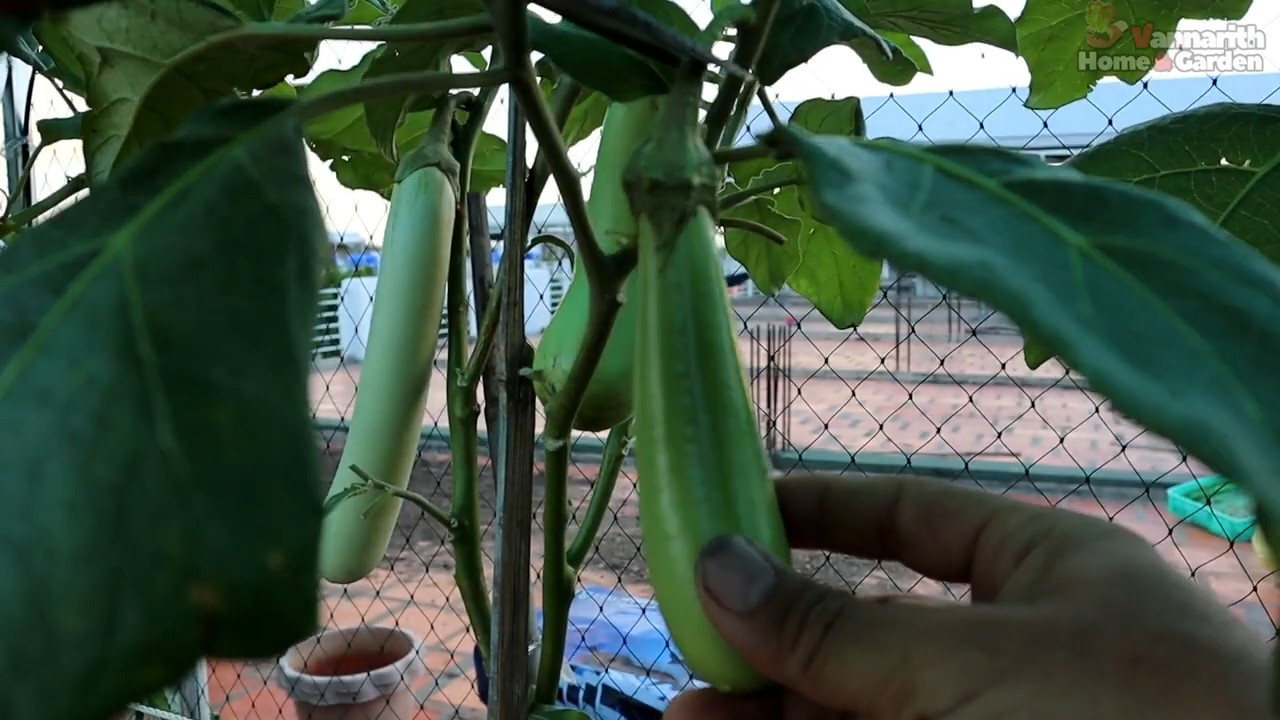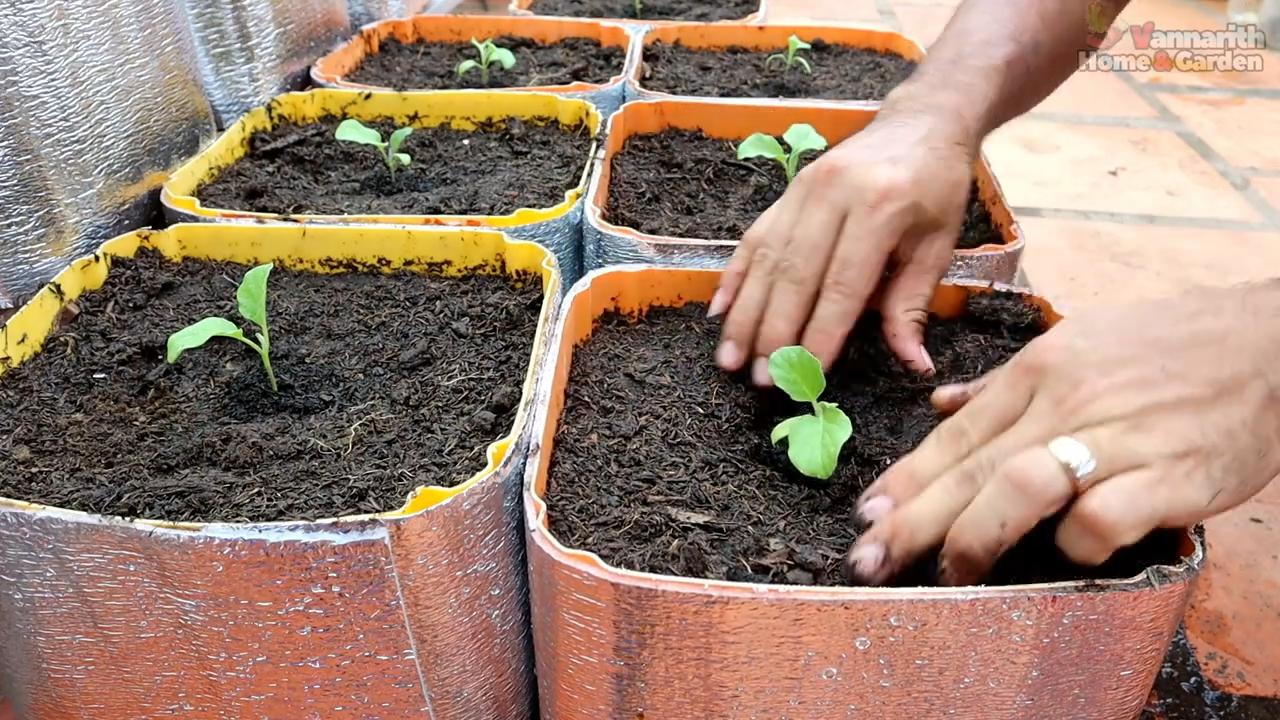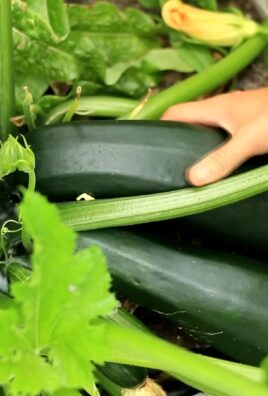Grow Eggplants at Home and unlock a world of culinary possibilities right in your backyard! Have you ever dreamt of plucking a perfectly ripe, glossy eggplant straight from the vine, ready to be transformed into a delicious baba ghanoush or a hearty eggplant parmesan? Well, dream no more! This DIY guide is your key to making that dream a reality, even if you’re a complete beginner.
Eggplants, also known as aubergines, have a rich history, dating back thousands of years to ancient Asia. They were initially cultivated for their medicinal properties before becoming a culinary staple in various cultures around the world. From the Mediterranean to the Far East, eggplants have been celebrated for their unique flavor and versatility.
But why should you bother with growing your own? Let’s face it, store-bought eggplants can sometimes be bland and disappointing. By learning how to grow eggplants at home, you gain control over the entire process, ensuring you get the freshest, most flavorful produce possible. Plus, it’s incredibly rewarding to nurture a plant from seed to harvest! This guide will provide you with simple, effective DIY tricks and hacks to overcome common challenges and enjoy a bountiful eggplant harvest. Get ready to roll up your sleeves and embark on a fun and fulfilling gardening adventure with me!

Growing Eggplants Yourself: Your Comprehensive DIY Guide
Hey garden friends! Have you ever dreamed of harvesting your own plump eggplants from the garden? I can tell you, it’s an incredibly satisfying feeling! Growing eggplants might seem a bit intimidating at first, but with the right guide and a little patience, it’s really doable. In this article, I’ll show you step-by-step how to successfully grow your own eggplants at home. Let’s get started!
What You Need: The Right Preparation is Everything!
Before we get started, here is a list of the things you’ll need for growing eggplants:
- Eggplant seeds or young plants: Choose a variety that suits your climate. There are so many great types, from the classic dark purple varieties to striped or white eggplants.
- Seed-starting mix: For sowing, a special seed-starting mix is ideal as it is low in nutrients and loose.
- Pots or seed trays: For starting the seeds indoors.
- Potting soil: A nutrient-rich soil for planting out in the garden bed or in larger pots.
- Compost or organic fertilizer: Eggplants are heavy feeders and need plenty of nutrients.
- Watering can or hose: For regular watering.
- Plant stakes: To support the plants, especially when they are bearing fruit.
- Garden shears: For pruning the plants.
- Mulch: To retain moisture in the soil and suppress weeds.
- (Optional) Greenhouse or cold frame: for an earlier start and a longer harvest season.
Sowing and Starting Seeds: The Foundation for a Bountiful Harvest
Starting seeds indoors is especially important if you live in a region with shorter summers. Eggplants need a long growing season.
- Determine sowing time: Start sowing about 6-8 weeks before the last expected frost. In many regions, this is usually in March or April.
- Prepare the pots: Fill the starter pots or seed trays with seed-starting mix.
- Sow the seeds: Place 2-3 seeds per pot about 0.5-1 cm (0.2-0.4 inches) deep in the soil.
- Water: Gently moisten the soil with a spray bottle or watering can.
- Keep them warm: Place the pots in a warm, bright spot. A temperature of 22-25°C (72-77°F) is ideal for germination. A mini-greenhouse or a heat mat can help here.
- Keep moist: Make sure the soil is always slightly moist, but not wet.
- Prick out: Once the seedlings have 2-3 true leaves, you can prick them out. This means you transplant the strongest plants into larger pots so they have more space to grow.
Planting Out: Into the Garden Bed or Pot!
Once the danger of frost has passed and the eggplant seedlings are strong enough, they can be planted outdoors.
- Hardening off: Before you move the plants outside, you should harden them off for a few days. Place them outside for a few hours during the day and bring them back in at night. This way, they slowly get used to the changing conditions.
- Choose a location: Eggplants love the sun! Choose a sunny, warm, and wind-protected location.
- Prepare the soil: Loosen the soil well and mix in compost or organic fertilizer. Eggplants prefer a nutrient-rich, well-draining soil.
- Dig planting holes: Dig planting holes that are slightly larger than the root balls of the plants.
- Place the plants: Carefully place the eggplant seedlings in the holes and fill them with soil. Make sure the root ball is completely covered.
- Water in: Water the plants thoroughly.
- Maintain spacing: Keep a distance of about 45-60 cm (18-24 inches) between the plants so they have enough room to grow.
- Mulch: Cover the soil around the plants with mulch. This helps to retain moisture in the soil, suppress weeds, and keep the soil warm.
Care: How to Keep Your Eggplants Healthy and Productive
Proper care is crucial for a bountiful eggplant harvest.
- Watering: Eggplants need regular water, especially during fruit formation. It’s best to water them in the morning so the leaves can dry during the day. Avoid waterlogging, as this can lead to root rot.
- Fertilizing: Fertilize the eggplants regularly with an organic fertilizer or compost. Start about 2-3 weeks after planting out and repeat the fertilization every 2-3 weeks.
- Pruning: Pruning eggplant plants can promote fruit formation. Regularly remove side shoots that grow from the leaf axils. Leave only the main stems.
- Supporting: When the plants bear fruit, they can become heavy and bend over. Support them with plant stakes or a trellis.
- Protecting from pests and diseases: Eggplants can be infested by various pests and diseases, such as aphids, potato beetles, or fungal diseases. Check the plants regularly and combat pests and diseases early with appropriate measures.
- Pollination: Eggplants are self-pollinating, but pollination can be improved by wind or insects. You can also gently pollinate the flowers with a brush.
Harvest: The Reward for Your Efforts
The time has finally come: the eggplants are ripe and can be harvested!
- Recognize ripeness: Eggplants are ripe when they have shiny, plump skin and yield slightly to pressure. The color should be intense.
- Harvesting: Cut the eggplants with garden shears. Leave a small piece of the stem on the fruit.
- Harvest regularly: Harvest the eggplants regularly to stimulate more fruit production.
- Storage: Eggplants do not keep for long. Store them in the refrigerator and use them within a few days.
Additional Tips for a Successful Eggplant Harvest
- Variety selection: Choose an eggplant variety that suits your climate. There are early-ripening varieties that are particularly well-suited for regions with shorter summers.
- Practice crop rotation: Do not plant eggplants in the same spot every year. Rotate the location to prevent diseases and pests.
- Companion planting: Plant eggplants together with other plants that protect them from pests or promote their growth. Good companion plants include basil, marigolds, or garlic.
- Be patient: Eggplants take time to grow and bear fruit. Be patient and don’t give up, even if things don’t go perfectly.
Common Problems and Solutions
Potato beetles: Potato…
Aphids: Aphids can be rinsed off with a jet of water or treated with a biological insecticide.

Conclusion
So, there you have it! Growing eggplants at home, while it might seem daunting at first, is entirely achievable and incredibly rewarding. We’ve walked you through the essential steps, from selecting the right variety to troubleshooting common problems, and hopefully, demystified the process. But why should you bother? Why dedicate precious garden space to these purple beauties?
The answer is simple: flavor and control. Store-bought eggplants, while convenient, often lack the vibrant taste and tender texture of homegrown varieties. When you grow your own, you get to choose the exact cultivar that suits your palate, whether you prefer the classic globe eggplant, the slender Japanese eggplant, or the colorful Thai eggplant. You also have complete control over the growing conditions, ensuring that your eggplants are free from harmful pesticides and bursting with natural goodness.
Beyond the superior flavor, growing eggplants at home offers a unique connection to your food. There’s something deeply satisfying about nurturing a plant from seed to harvest, watching it thrive under your care, and then enjoying the fruits (or rather, vegetables!) of your labor. It’s a tangible reminder of the natural world and a powerful way to appreciate the food we eat.
Don’t be afraid to experiment! Try different growing techniques, such as container gardening or raised beds, to find what works best for your space and climate. Consider companion planting with basil or marigolds to deter pests and attract beneficial insects. And don’t limit yourself to just one variety of eggplant – explore the diverse world of eggplant cultivars and discover your favorites.
Ready to embark on your eggplant-growing adventure? We encourage you to give it a try! Start small, be patient, and don’t be discouraged by setbacks. Gardening is a learning process, and every season brings new opportunities to improve your skills.
And most importantly, share your experiences with us! We’d love to hear about your successes, your challenges, and your favorite eggplant recipes. Post photos of your homegrown eggplants on social media using #HomegrownEggplant or leave a comment below. Let’s build a community of eggplant enthusiasts and inspire others to discover the joy of growing their own food.
Growing eggplants at home is more than just a gardening project; it’s an investment in your health, your taste buds, and your connection to nature. So, grab your seeds, get your hands dirty, and get ready to enjoy the delicious rewards of your labor. Happy gardening!
Frequently Asked Questions (FAQ)
What is the best time to start growing eggplants from seed?
The ideal time to start growing eggplants from seed is typically 6-8 weeks before the last expected frost in your area. Eggplants are warm-season crops and require warm soil and air temperatures to thrive. Starting them indoors allows you to get a head start on the growing season and ensures that they are well-established before transplanting them outdoors. Check your local frost dates and plan accordingly. If you live in a warmer climate with a longer growing season, you can start seeds directly in the ground after the danger of frost has passed.
How much sunlight do eggplants need?
Eggplants are sun-loving plants and require at least 6-8 hours of direct sunlight per day to produce a bountiful harvest. Choose a planting location that receives full sun throughout the day. If you are growing eggplants in containers, make sure to place them in a sunny spot on your patio or balcony. Insufficient sunlight can lead to leggy plants, reduced flowering, and smaller fruit.
What type of soil is best for growing eggplants?
Eggplants prefer well-drained, fertile soil that is rich in organic matter. The ideal soil pH for eggplants is between 6.0 and 6.8. Before planting, amend your soil with compost, aged manure, or other organic materials to improve its fertility and drainage. Avoid planting eggplants in heavy clay soil, as this can lead to root rot. If you have clay soil, consider growing eggplants in raised beds or containers with a well-draining potting mix.
How often should I water my eggplants?
Eggplants need consistent moisture to thrive, especially during hot, dry weather. Water your eggplants deeply and regularly, aiming to keep the soil consistently moist but not waterlogged. Water at the base of the plants to avoid wetting the foliage, which can increase the risk of fungal diseases. Mulching around the plants with straw or wood chips can help to retain moisture in the soil and suppress weeds. As a general rule, water your eggplants when the top inch of soil feels dry to the touch.
What are some common pests and diseases that affect eggplants?
Eggplants are susceptible to a variety of pests and diseases, including aphids, flea beetles, spider mites, tomato hornworms, and fungal diseases such as verticillium wilt and early blight. Regularly inspect your plants for signs of pests or diseases and take action promptly to prevent them from spreading. Use organic pest control methods such as insecticidal soap, neem oil, or handpicking to control pests. To prevent fungal diseases, ensure good air circulation around your plants, avoid overhead watering, and remove any infected leaves or stems.
How do I know when my eggplants are ready to harvest?
Eggplants are typically ready to harvest when they are firm, glossy, and have reached their mature size and color. The skin should be smooth and unblemished. Gently press the eggplant with your thumb; if it gives slightly, it is ripe. Overripe eggplants will become soft, dull, and bitter. Use a sharp knife or pruning shears to cut the eggplant from the plant, leaving a short stem attached. Harvest eggplants regularly to encourage continued production.
Can I grow eggplants in containers?
Yes, eggplants can be successfully grown in containers, making them a great option for gardeners with limited space. Choose a large container that is at least 12 inches in diameter and depth to accommodate the plant’s root system. Use a well-draining potting mix and ensure that the container has drainage holes to prevent waterlogging. Place the container in a sunny location that receives at least 6-8 hours of direct sunlight per day. Water regularly and fertilize every 2-3 weeks with a balanced fertilizer.
What are some good companion plants for eggplants?
Companion planting can help to improve the health and productivity of your eggplants. Some good companion plants for eggplants include basil, marigolds, thyme, oregano, and peppers. Basil helps to repel pests such as aphids and whiteflies, while marigolds deter nematodes and other soil-borne pests. Thyme and oregano attract beneficial insects that prey on pests. Peppers can provide shade for eggplants in hot climates. Avoid planting eggplants near fennel, as it can inhibit their growth.
How can I prevent blossom-end rot in my eggplants?
Blossom-end rot is a common problem in eggplants that is caused by a calcium deficiency. It appears as a dark, sunken spot on the blossom end of the fruit. To prevent blossom-end rot, ensure that your soil is rich in calcium and that your plants receive consistent watering. You can add calcium to the soil by incorporating bone meal or crushed eggshells. Avoid over-fertilizing with nitrogen, as this can interfere with calcium uptake. If you suspect a calcium deficiency, you can also spray your plants with a calcium chloride solution.
My eggplant flowers are dropping off without producing fruit. What could be the problem?
There are several reasons why eggplant flowers might drop off without producing fruit. One common cause is insufficient pollination. Eggplants are self-pollinating, but they often benefit from the help of insects or wind to transfer pollen. You can try hand-pollinating your eggplants by gently shaking the flowers or using a small brush to transfer pollen from one flower to another. Other possible causes of flower drop include extreme temperatures, insufficient sunlight, over-watering, under-watering, and nutrient deficiencies. Make sure your plants are receiving adequate sunlight, water, and nutrients, and protect them from extreme temperatures.




Leave a Comment